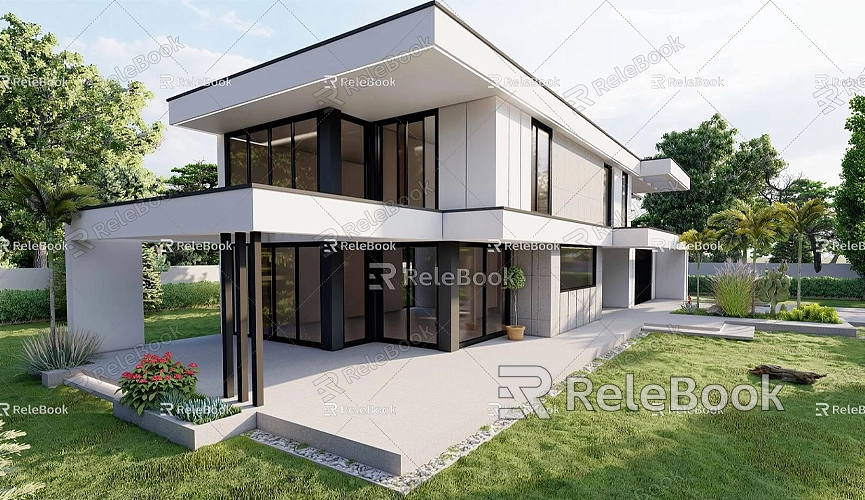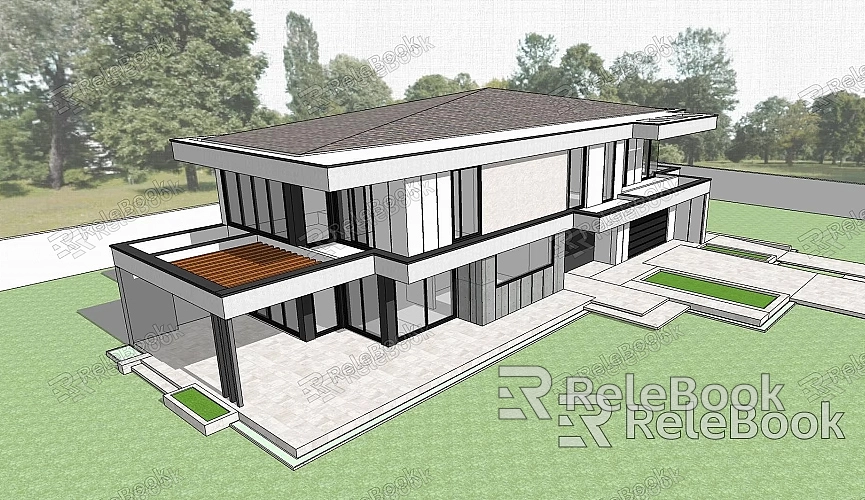How to Bring SketchUp Models into Revit
In the field of architectural design, SketchUp and Revit are among the most commonly used tools by designers. SketchUp is widely appreciated for its simplicity and rapid modeling capabilities, while Revit is a powerful Building Information Modeling (BIM) software focused on handling complex architectural projects with detail and information management. Importing SketchUp models into Revit not only enhances the design workflow but also allows designers to fully leverage Revit's powerful features for detailed architectural design and analysis. In this article, we'll explore the steps and techniques for importing SketchUp models into Revit.

Features of SketchUp and Revit
First, let’s take a brief look at the characteristics of SketchUp and Revit. SketchUp is an intuitive modeling tool ideal for quickly creating 3D models, especially during the conceptual design phase, enabling designers to swiftly realize their ideas. In contrast, Revit is focused on BIM, allowing users to create models rich in information, facilitating various analyses and optimizations throughout the design process. Although the learning curves differ, these two software applications are often complementary in practical use.
Exporting SketchUp Models to Compatible Formats
To import a SketchUp model into Revit, you first need to export it in a format that Revit can recognize. Common formats include DWG and IFC. Below are the steps to export a SketchUp model to DWG format:
1. Open the SketchUp Model: First, launch SketchUp and open the model you wish to export. Ensure there are no unclosed edges or faces to avoid issues during export.
2. Export the Model:
- From the top menu, select “File,” then click “Export,” and choose “3D Model.”
- In the pop-up window, select “DWG (AutoCAD)” as the export format. If necessary, click the “Options” button to set export details.
3. Set Export Options: In the export options, ensure you select appropriate units, such as meters or centimeters, to maintain the correct scale in Revit.
4. Save the File: Choose a location to save the file, enter a file name, and then click the “Export” button.
Once the export is complete, you will have a DWG file ready for import into Revit.
Importing SketchUp Models into Revit
Next, we will import the recently exported DWG file into Revit. The steps are as follows:
1. Open Revit: Start the Revit software and open a new or existing project.
2. Import the DWG File:
- In the Revit interface, select the “Insert” tab, then click “Import CAD.”
- In the dialog box that appears, locate the previously exported DWG file and select it.
3. Set Import Options: In the import settings, you can choose options for units, colors, layers, etc. It’s recommended to select “Origin to Origin” or “Center to Center” alignment to ensure the model is positioned correctly in Revit.
4. Click Open: After setting everything, click the “Open” button, and Revit will begin importing the DWG file.

The import process may take some time, especially if the file is large. Once complete, your SketchUp model will appear in the Revit workspace.
Optimizing the Imported Model
While the imported model is successfully displayed in Revit, further optimizations are often needed to ensure its effectiveness in the design process. Here are some optimization suggestions:
- Convert to Revit Families: The imported DWG file is typically a single geometric entity. To better manage the model, consider converting it into “Families” in Revit. Using Revit's family tools, you can redefine elements from SketchUp as walls, floors, roofs, and other building components for further design and analysis.
- Material and Texture Adjustments: The imported DWG file will not retain materials and textures from SketchUp. Therefore, during post-rendering, you will need to reassign materials in Revit. Revit offers a rich material library, allowing you to assign suitable materials to the imported model based on project needs, enhancing its visual realism.
- Check Geometric Accuracy: After importing, be sure to check the model's geometry to ensure all edges and faces are intact. If any parts are incomplete, you can use Revit’s editing tools to make adjustments or return to SketchUp for modifications and re-export.
Common Issues and Solutions
During the process of importing SketchUp models into Revit, some common issues may arise. Here are some problems and their solutions:
- Errors in Imported Models: If the imported model has geometric errors, it may be due to the complexity of the SketchUp model or incorrect export settings. Try simplifying the model by removing unnecessary details, then re-export.
- Scale Mismatch: If the imported model appears at the wrong size, check the unit settings during export to ensure they match between SketchUp and Revit. If the model has already been imported, you can adjust its scale by selecting and resizing it.
- Importing IFC Files: In addition to DWG format, SketchUp models can also be exported as IFC files. IFC (Industry Foundation Classes) is an open BIM file format that retains model geometry and information well. In SketchUp, select “Export” and choose the IFC format, then select “Import IFC” in Revit.
Enhancing Modeling with Relebook Resources
During the design process, the richness of resources significantly impacts model quality. If you need high-quality 3D textures and HDRIs for creating models and virtual scenes, you can download them for free from [https://textures.relebook.com](https://textures.relebook.com). If you need exquisite 3D models, you can download them from [https://3dmodels.relebook.com](https://3dmodels.relebook.com), where Relebook offers a vast array of quality 3D resources. These resources can help you enhance the quality of your designs and make your models more vibrant.
Bringing SketchUp models into Revit is an essential skill that can significantly boost design efficiency. By effectively utilizing SketchUp’s rapid modeling capabilities alongside Revit’s detailed design features, designers can complete projects more efficiently. Mastering the techniques for exporting DWG and IFC files, successfully importing SketchUp models, and optimizing them with Revit’s family tools and material settings will enhance your workflow.
We hope this article helps you better understand how to import SketchUp models into Revit, improving your work efficiency and design quality. Remember to leverage various resources during the design process to enrich your models and diversify your creativity.

